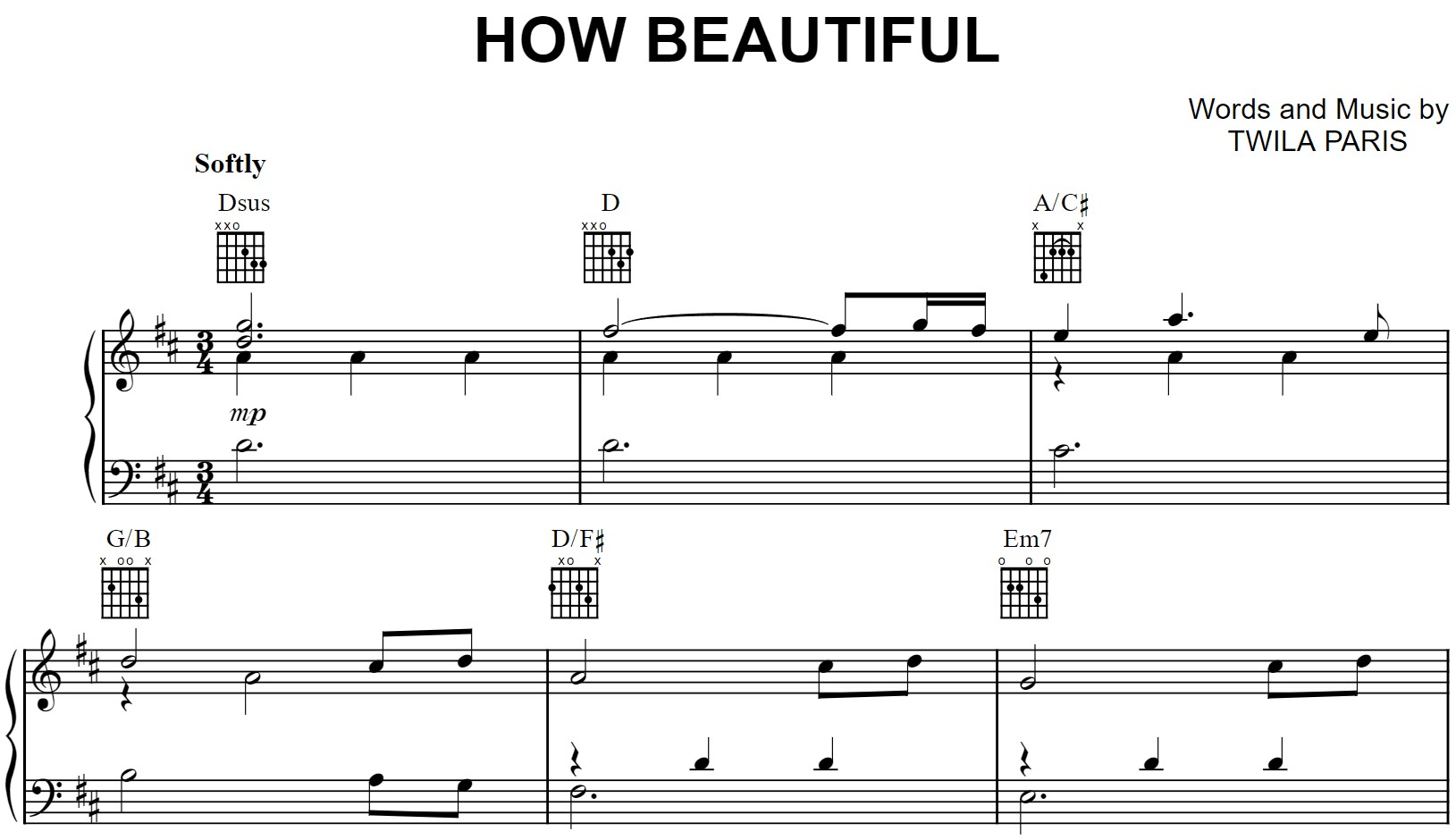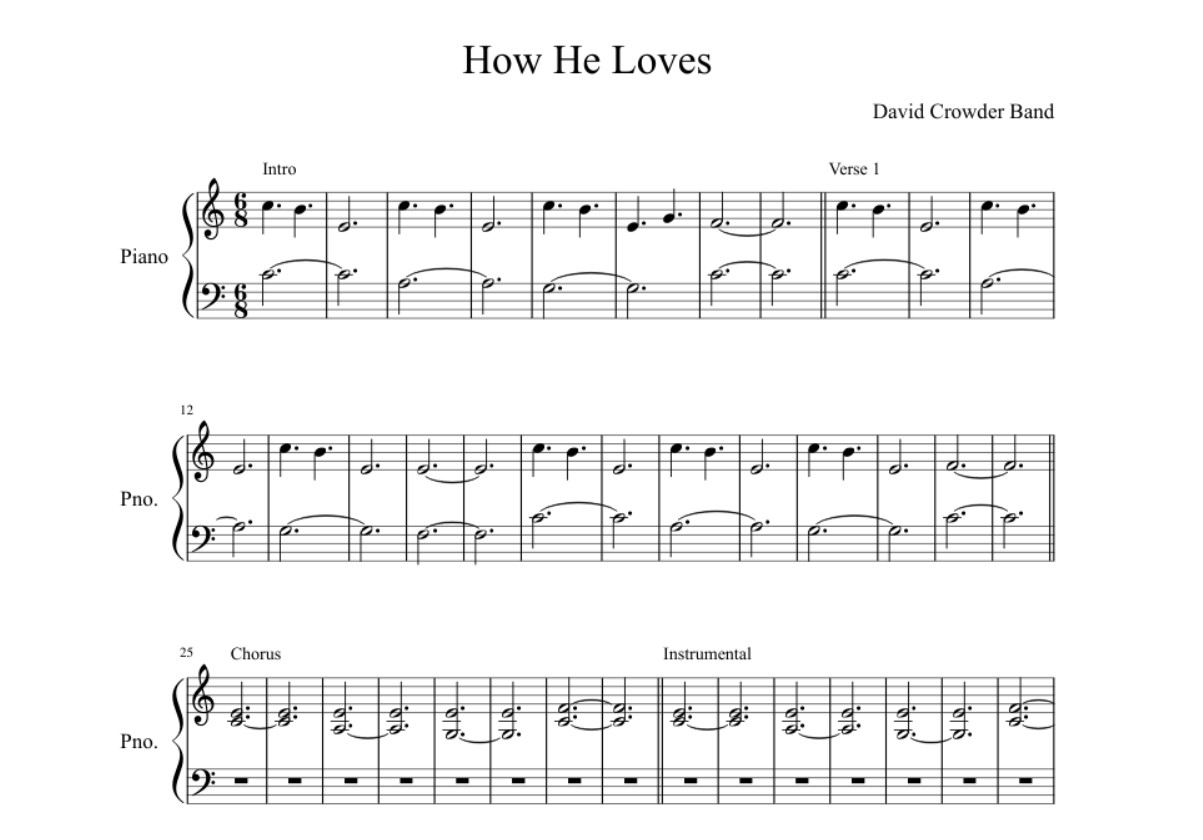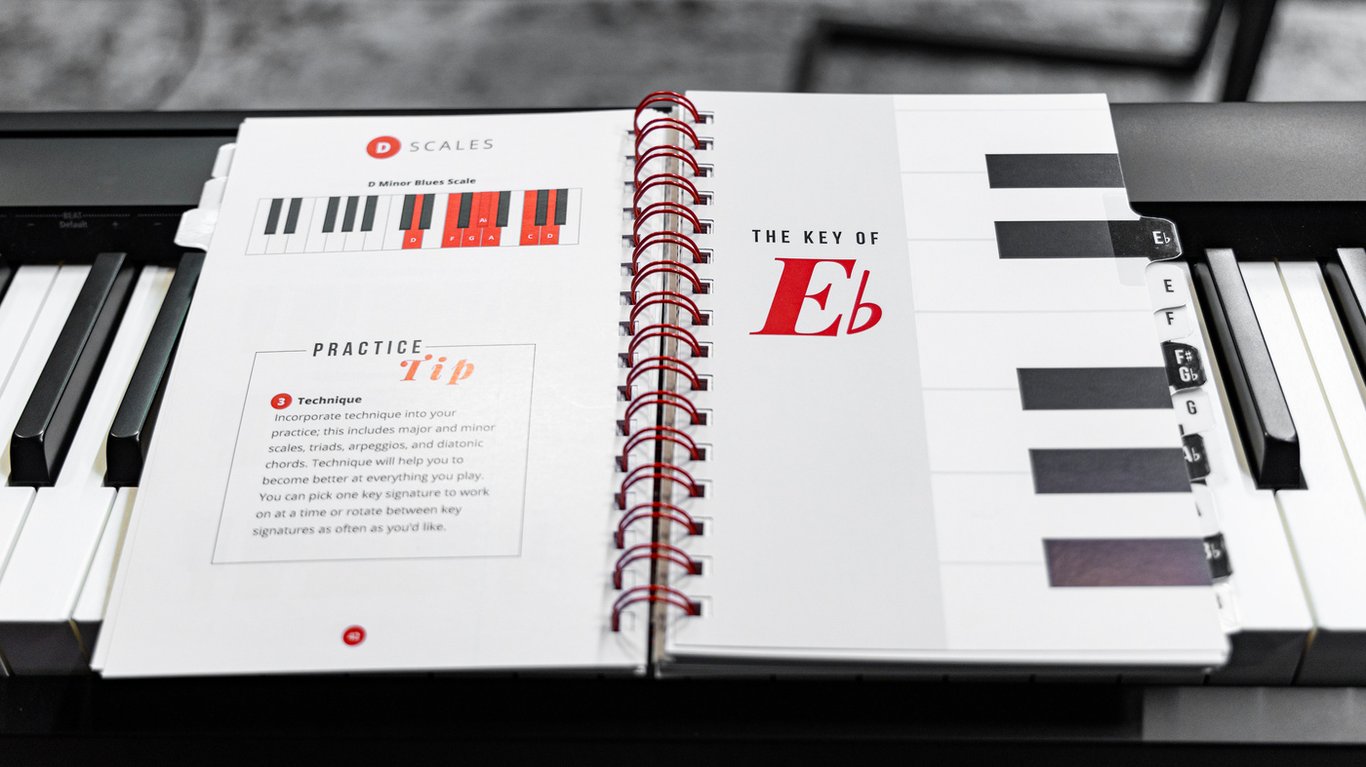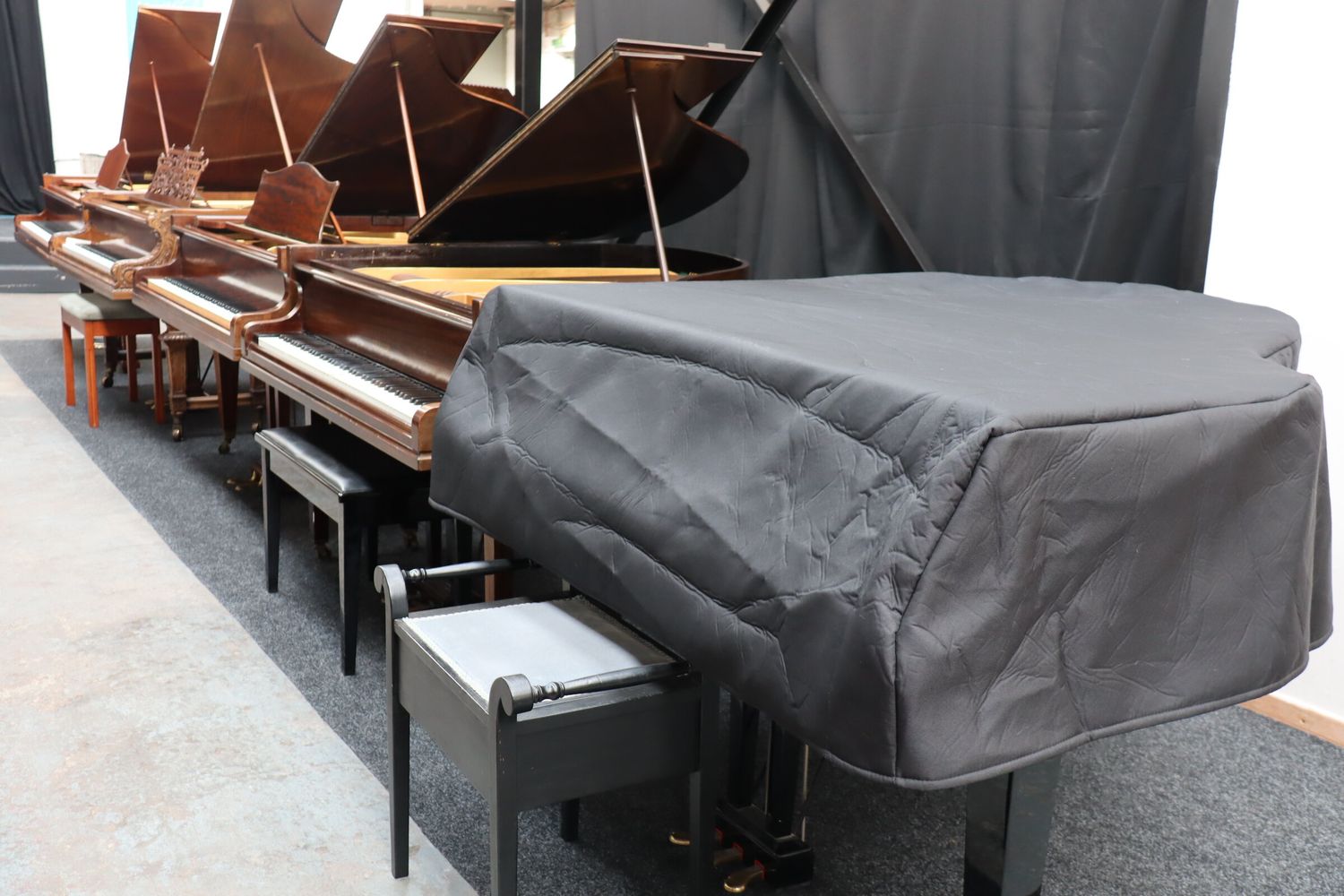Home>Instruments>Piano>How To Memorize Piano Music
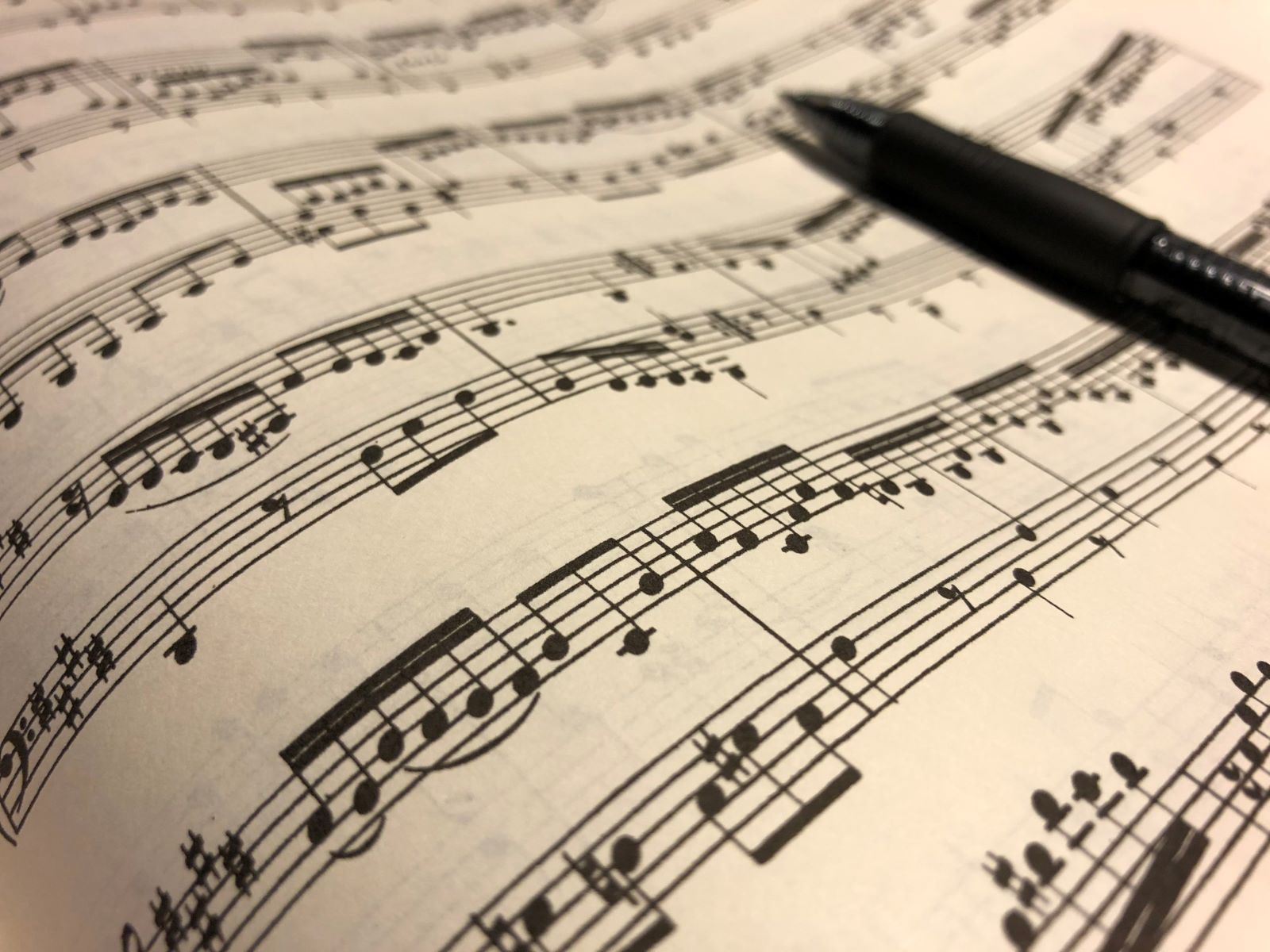

Piano
How To Memorize Piano Music
Published: February 10, 2024
Learn effective techniques to memorize piano music effortlessly with our expert tips and strategies. Enhance your piano skills and conquer challenging pieces.
(Many of the links in this article redirect to a specific reviewed product. Your purchase of these products through affiliate links helps to generate commission for AudioLover.com, at no extra cost. Learn more)
Table of Contents
Introduction
Understanding the Art of Memorizing Piano Music
Learning to play the piano is a beautiful journey that requires dedication, practice, and a deep connection to the music. One of the most rewarding aspects of piano playing is the ability to memorize and perform pieces from memory. This skill not only enhances your performance but also allows you to delve into the emotional and expressive depths of the music without the constraints of sheet music.
Memorizing piano music is a multifaceted process that involves understanding the structure, melody, harmony, and rhythm of a piece. It requires a blend of analytical thinking, muscle memory, and a profound connection to the music. In this guide, we will explore the art of memorizing piano music, offering insights, techniques, and tips to help pianists at all levels enhance their memorization skills.
Whether you are a beginner embarking on your musical journey or an experienced pianist looking to refine your memorization abilities, this guide will provide valuable strategies to enrich your musical experience. From understanding the nuances of the music to implementing effective memorization techniques and refining your practice methods, this comprehensive resource aims to empower you to memorize piano music with confidence and artistry. Let's embark on this enriching journey of musical exploration and mastery together.
Understanding the Music
Before delving into the intricacies of memorizing piano music, it is crucial to develop a deep understanding of the piece you aim to memorize. This involves more than just playing the notes on the page; it requires a holistic comprehension of the music’s structure, phrasing, dynamics, and emotional nuances.
Begin by analyzing the musical score. Identify the key signature, time signature, and any recurring motifs or themes. Understanding the harmonic progressions, chord structures, and melodic patterns will provide insight into the composer’s intentions and the overall narrative of the piece.
As you familiarize yourself with the music, pay attention to the phrasing and dynamics. Consider the overarching musical arc, the points of tension and release, and the emotional journey the piece undertakes. This understanding will inform your interpretative choices and aid in the memorization process.
Furthermore, listening to various interpretations of the piece by accomplished pianists can offer valuable insights. Observing how different musicians interpret the phrasing, dynamics, and emotional content of the music can broaden your perspective and inspire your own artistic interpretation.
Ultimately, understanding the music goes beyond the technicalities of the score; it involves connecting with the composer’s vision and expressing the inherent emotions within the music. By immersing yourself in the musical narrative and unraveling its expressive depths, you lay a strong foundation for the memorization process.
Breaking Down the Piece
Breaking down a piano piece into its fundamental components is a pivotal step in the memorization process. By dissecting the music into manageable sections, pianists can effectively internalize and master each segment, leading to a comprehensive memorization of the entire piece.
Begin by dividing the piece into logical sections based on musical phrases, themes, or structural elements. This segmentation allows for focused practice and facilitates a deeper understanding of the music’s architecture. Moreover, breaking down the piece enables pianists to identify recurring patterns, motifs, and variations, which contribute to a more nuanced interpretation and solidify the memorization process.
As you delve into each section, pay close attention to the interplay between the hands, the harmonic progressions, and the overall musical texture. Analyze the relationships between the melody and accompaniment, and consider how each element contributes to the cohesive narrative of the piece.
Additionally, practice each section hands separately to develop a strong command of the individual voices within the music. This approach fosters a deeper connection to the intricacies of the composition and cultivates a more profound understanding of the musical interplay between the hands.
Furthermore, as you break down the piece, consider the technical challenges and interpretative nuances within each section. By addressing technical passages, fingering choices, and expressive elements systematically, you can refine your approach and elevate the overall quality of your performance.
Ultimately, breaking down the piece not only facilitates the memorization process but also enhances your interpretative insight and technical proficiency. By approaching the music in a methodical and systematic manner, you lay the groundwork for a comprehensive and deeply ingrained memorization of the piano piece.
Memorization Techniques
Memorizing piano music requires a combination of cognitive strategies, muscle memory, and a profound connection to the music. Implementing effective memorization techniques can significantly enhance your ability to internalize and recall intricate musical compositions.
One powerful technique is visualization. Close your eyes and mentally visualize the musical score, imagining the notes, phrases, and structural elements of the piece. Visualization can strengthen your memory and deepen your understanding of the music’s architecture, fostering a more intuitive and comprehensive memorization process.
Another valuable approach is associative learning. Create vivid mental associations between specific musical passages and visual, emotional, or narrative cues. By linking the music to personal experiences, imagery, or storytelling, you can anchor the music in your memory and evoke a more expressive and emotive performance.
Utilizing mnemonic devices can also aid in memorization. Create mnemonic phrases or acronyms to remember challenging sequences, patterns, or key signatures within the music. These memory aids can serve as valuable anchors, reinforcing your recall of intricate musical details.
Additionally, kinesthetic learning techniques, such as tactile exploration of the keyboard and tactile reinforcement of note sequences, can enhance muscle memory and spatial awareness, contributing to a more secure memorization of the piece.
Furthermore, leveraging analytical techniques, such as identifying chord progressions, harmonic relationships, and formal structures, can provide a deeper understanding of the music and aid in memorization. By comprehending the underlying musical framework, you can internalize the piece with greater clarity and precision.
Experiment with these memorization techniques and discover the approaches that resonate most effectively with your learning style and musical sensibilities. By integrating these strategies into your practice routine, you can cultivate a robust and enduring memorization of piano music, enriching your performance with confidence, expressiveness, and artistry.
Practice Tips
Effective and focused practice is essential for mastering the memorization of piano music. By incorporating deliberate and strategic approaches to your practice sessions, you can optimize your learning process and enhance your ability to memorize and perform complex musical compositions.
First and foremost, establish a consistent practice routine. Dedicate regular, uninterrupted time to engage with the music, allowing for sustained focus and gradual mastery of the piece. Consistency in practice cultivates a deeper connection to the music and facilitates the memorization process.
Break down your practice sessions into targeted segments, focusing on specific passages, technical challenges, or interpretative nuances within the piece. By addressing individual components systematically, you can refine your understanding and execution of the music, leading to a more comprehensive memorization.
Utilize varied practice techniques, including slow and deliberate practice, rhythmic variations, and expressive experimentation. By exploring the music from different angles and tempos, you can internalize the nuances of the piece and fortify your memory of its intricacies.
Engage in mindful practice, maintaining a heightened awareness of your physical and emotional connection to the music. Cultivate a deep sense of presence and intentionality in your practice, allowing for a more profound absorption of the musical content and a more enduring memorization of the piece.
Furthermore, leverage technology to aid in your practice. Recording and reviewing your performances can offer valuable insights into your progress and areas for improvement. Additionally, utilizing apps or software for ear training, sight-reading, and music theory can complement your practice regimen and enhance your overall musicianship.
Lastly, embrace patience and persistence in your practice journey. Memorizing piano music is a gradual and iterative process that requires dedication and resilience. Celebrate incremental progress and remain committed to the transformative power of consistent and purposeful practice.
By integrating these practice tips into your musical routine, you can elevate your memorization skills, refine your performance, and embark on a fulfilling and enriching musical journey filled with artistic expression and mastery.
Conclusion
Embarking on the journey of memorizing piano music is a profound and transformative endeavor that encompasses technical proficiency, artistic interpretation, and a deep emotional connection to the music. Throughout this guide, we have explored the multifaceted process of memorization, delving into the nuances of understanding, breaking down, and internalizing complex musical compositions.
Understanding the structural, harmonic, and emotional facets of the music lays the groundwork for a more profound and intuitive memorization process. By dissecting the piece into manageable sections and honing in on interpretative nuances, pianists can cultivate a comprehensive understanding of the music, leading to a more enduring memorization.
Implementing effective memorization techniques, such as visualization, associative learning, and mnemonic devices, empowers pianists to internalize intricate musical details and evoke a more expressive and emotive performance. By integrating these cognitive strategies and kinesthetic approaches, musicians can fortify their memory of the music and enhance their overall interpretative insight.
Furthermore, deliberate and focused practice, characterized by consistency, targeted exploration, and mindful engagement, is paramount in solidifying the memorization of piano music. By embracing varied practice techniques and leveraging technology as a supportive tool, pianists can refine their memorization skills and elevate their performance with confidence and artistry.
As you embark on your memorization journey, remember that patience, resilience, and a deep love for the music are essential companions. Embrace the iterative nature of the memorization process, celebrate incremental progress, and remain dedicated to the transformative power of music in your life.
May this guide serve as a source of inspiration and guidance as you navigate the enriching path of memorizing piano music. Whether you are a budding pianist or a seasoned musician, may your memorization endeavors be imbued with creativity, passion, and a profound connection to the timeless art of piano music.



